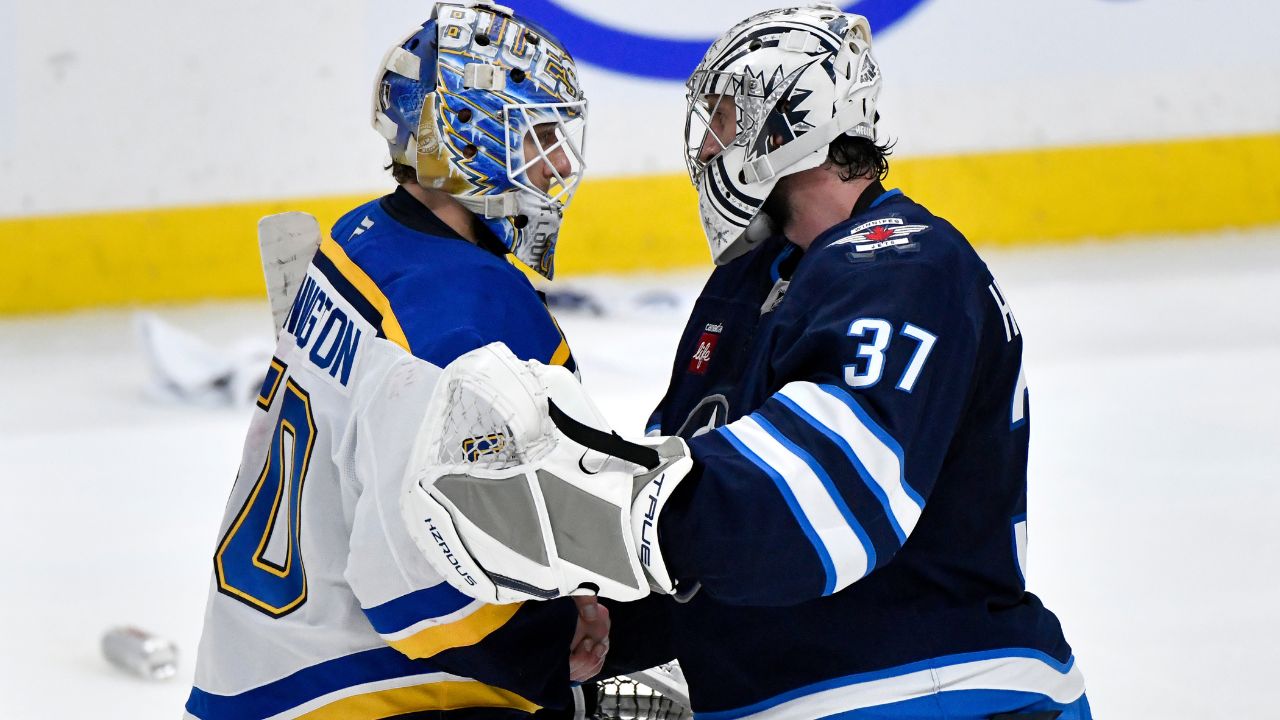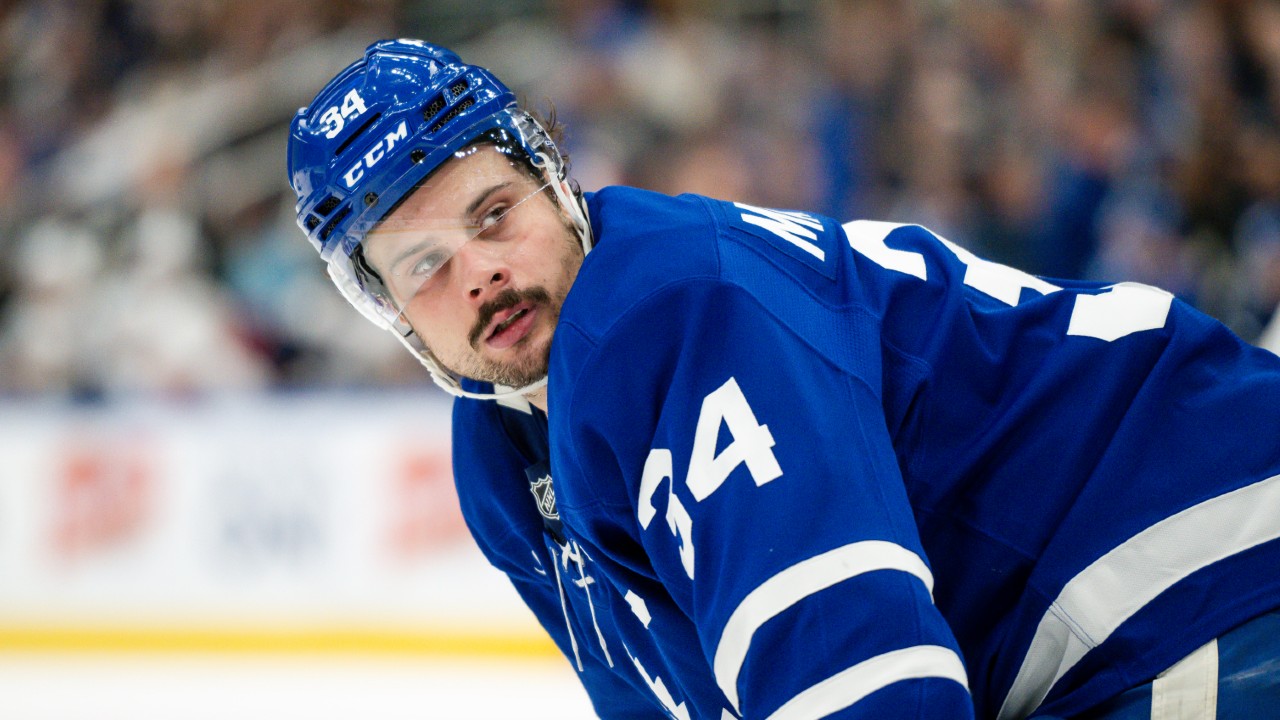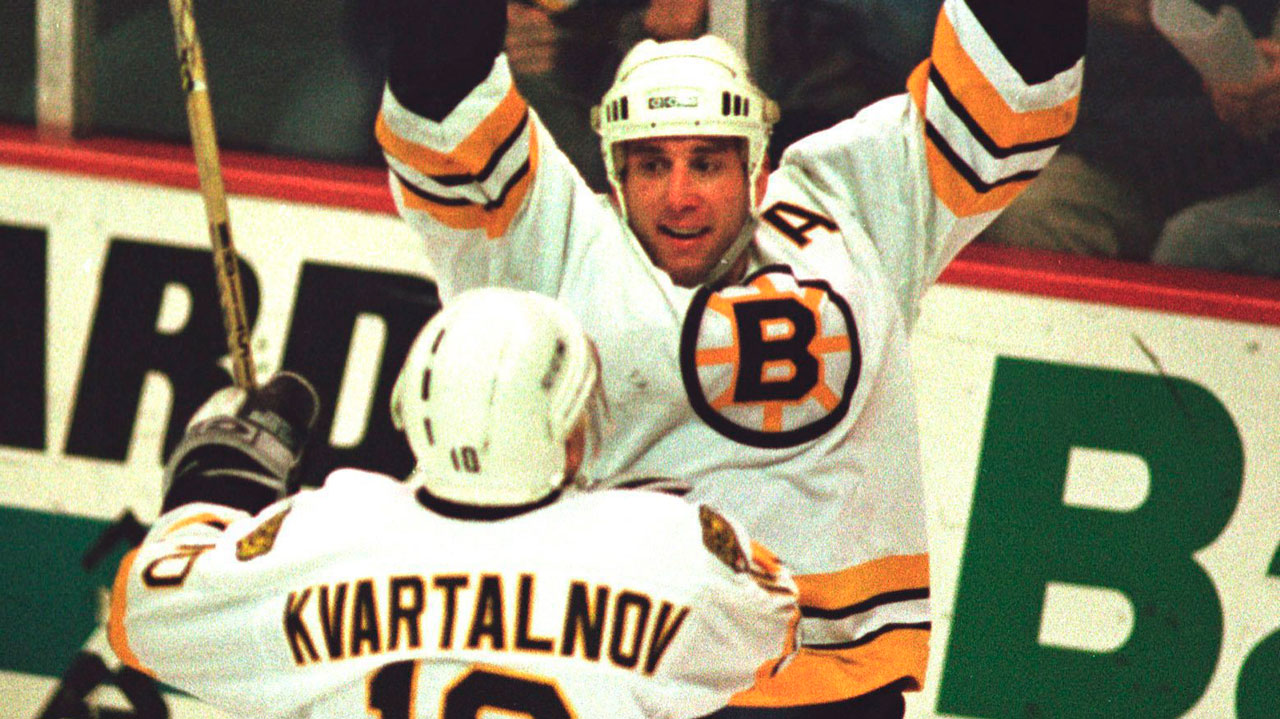
VANCOUVER – As bad as the Vancouver Canucks have been at times during their five decades in the National Hockey League, they haven’t let many great players get away from the West Coast.
They’ve done significantly better in trades, on average, than they have at the draft. Coach Alain Vigneault, who oversaw the Canucks’ most successful era, once challenged reporters to name one player who left Vancouver and did better somewhere else.
Matt Cooke?
But there have been a few. Here are five all-time players who were drafted or signed by the Canucks, then got away.
Note: We’re ranking on the basis of net loss – not only what the player did after he left the Canucks, but how Vancouver fared with the players, if any, they chose instead. Michael Peca, for instance, turned into a Selke Trophy winner and team captain after his trade from Vancouver in 1995. But in return for Peca, the Canucks got 10 years of Alex Mogilny and Brendan Morrison.
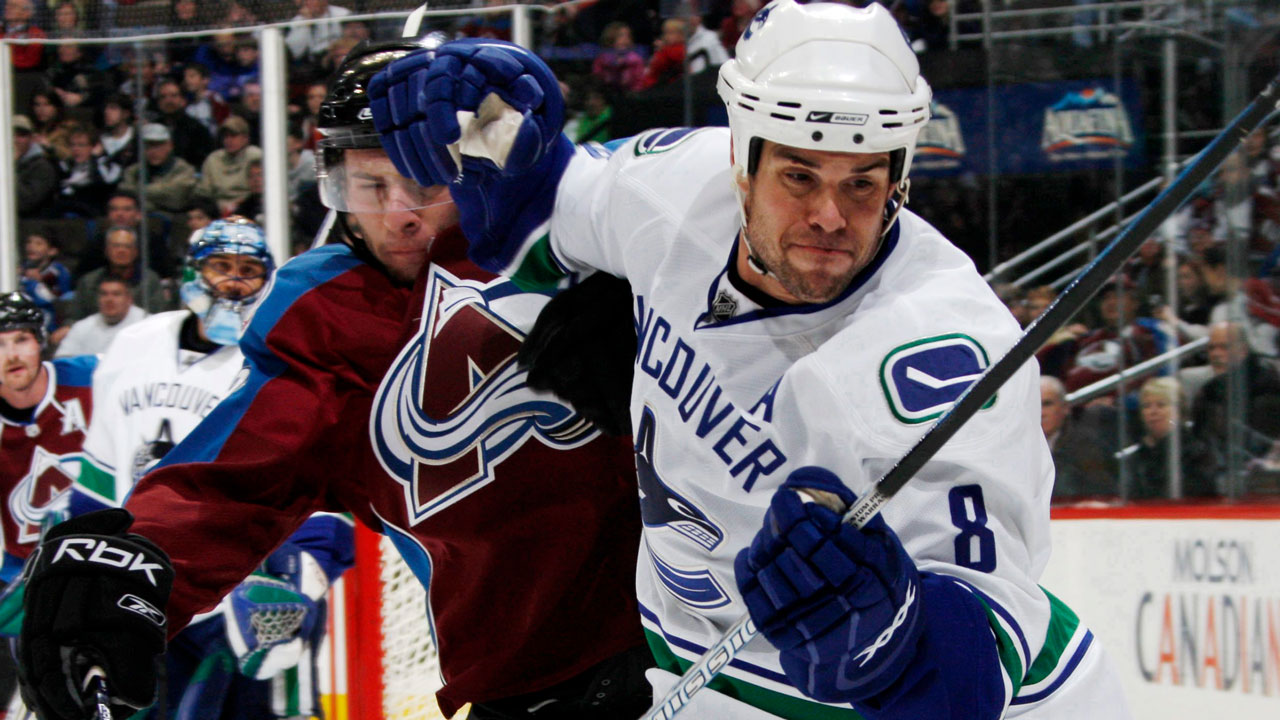
Willie Mitchell uses his elbow to fend off Colorado Avalanche left winger Wojtek Wolski as they work to reach the puck in the corner during the first period of an NHL hockey game. (David Zalubowski/AP)
5. Willie Mitchell
Canucks tenure: 2006-10
Signed as a free agent with the Los Angeles Kings on Aug. 25, 2010.
Cooke and Zack Kassian were also candidates for this list, but both had asterisks on their exits, so we’re going with Willie Mitchell because his avoidable departure came at a critical moment in Canucks’ history – the year before Vancouver would win the Presidents’ Trophy but lose in the Stanley Cup Final to the Boston Bruins when the team’s defence was weakened by injuries and suspension.
Mitchell was an excellent, robust shutdown defenceman during four years in Vancouver, but his final game was Jan. 16, 2010 when a high hit by Pittsburgh’s Evgeni Malkin ended his season due to a concussion. Mitchell was still not fully healed as free agency approached on July 1 and, unable to see his defenceman work out, general manager Mike Gillis made a blockbuster trade at the draft to replace him, surrendering future 30-goal scorer Michael Grabner and a first-round pick to get Keith Ballard from the Florida Panthers.
Ballard never became more than a depth player under Vigneault, and the Canucks eventually bought out his six-year, $25.2-million contract. Mitchell, who wanted to stay with the Canucks, settled for a two-year, $7-million offer from Los Angeles and went on to win two Stanley Cups with the Kings.
4. R.J. Umberger
Canucks tenure: Traded as an unsigned draft pick to the New York Rangers, along with Martin Grenier, in exchange for Martin Rucinsky, March 9, 2004.
A first-round, 16th-overall pick of the Canucks in 2001 NHL Draft, R.J. Umberger never became a star in the NHL. The Rangers, in fact, thought so little of him that three months after trading for his rights, they let the 22-year-old sign with the Philadelphia Flyers as a free agent. But Umberger turned himself into a good NHL player, an alternate captain who had five 20-goal seasons and logged 779 games in a career shortened by injuries.
Rucinsky played only 20 games for the Canucks as a trade-deadline rental in 2004, then bolted back to the Rangers as an unrestricted free agent. His impact on the Canucks: two goals, three assists.
Exasperated by Umberger’s unwillingness to yield in negotiations on an entry-level contract after leaving Ohio State University, Canucks general manager Brian Burke gladly would have driven him to the airport had the forward ever actually played in Vancouver. Instead, Burke dramatically overpaid for Rucinsky the day after Todd Bertuzzi attacked Steve Moore and was suspended for the balance of the season.
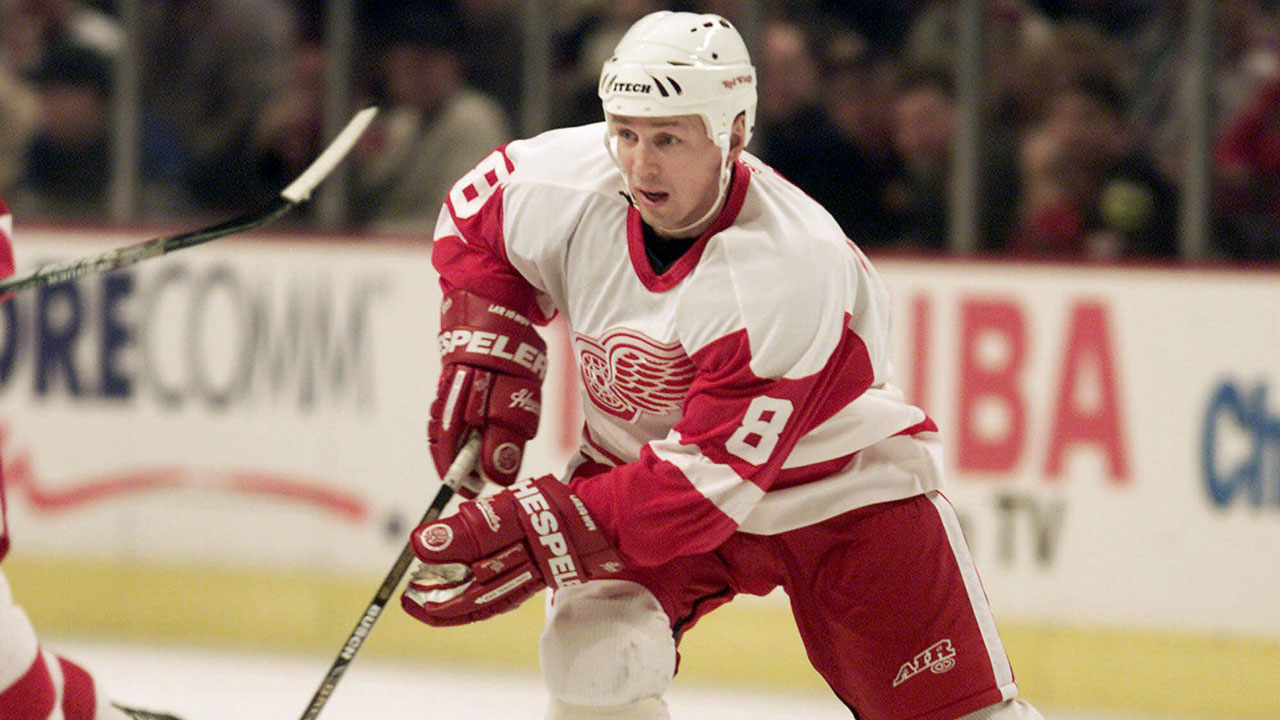
Detroit Red Wings’ Igor Larionov skates against the Chicago Blackhawks. (Ted S. Warren/AP)
3. Igor Larionov
Canucks tenure: 1989-92
Claimed by the San Jose Sharks on waivers on Oct. 4, 1992.
We’re not sure whether the Canucks in 1992 more grossly underestimated Igor Larionov’s principles or ability, but the first led to his unnecessary exit from Vancouver and the latter haunted the team for more than a decade.
The complexity of Pavel Bure’s arrival through the 1989 draft was matched by Larionov’s departure the summer after helping the Russian Rocket win the Calder Trophy in 1992. An 11th-round lottery-ticket pick of the Canucks in 1985, Larionov came to Vancouver in 1989 after the team negotiated his release from Central Red Army, an essential communist Soviet Union’s company team, by agreeing to pay Russian hockey officials an amount equal to Larionov’s NHL salary.
Believing those officials to be corrupt, and adamant that he would do nothing that further enriched them, Larionov said before his initial three-year contract ended that he would not re-sign with the Canucks until they found a way out of their royalty agreement with the Russians. Larionov said he would play in Europe before he’d let the Canucks funnel more money to Moscow. Playing in Europe would also break the royalty agreement, and allow the centre to return to the NHL in the spring of 1993.
When Larionov signed a one-year deal that summer with Swiss club Lugano, Canucks general manager Pat Quinn waived his NHL rights and one of the greatest European players of his generation was claimed by San Jose.
True to his word – again – Larionov returned to the NHL from Switzerland and played only another 11 years, most of them for the Detroit Red Wings, with whom he averaged 51 points per season and won three Stanley Cups. Larionov was elected to the Hockey Hall of Fame in 2008.
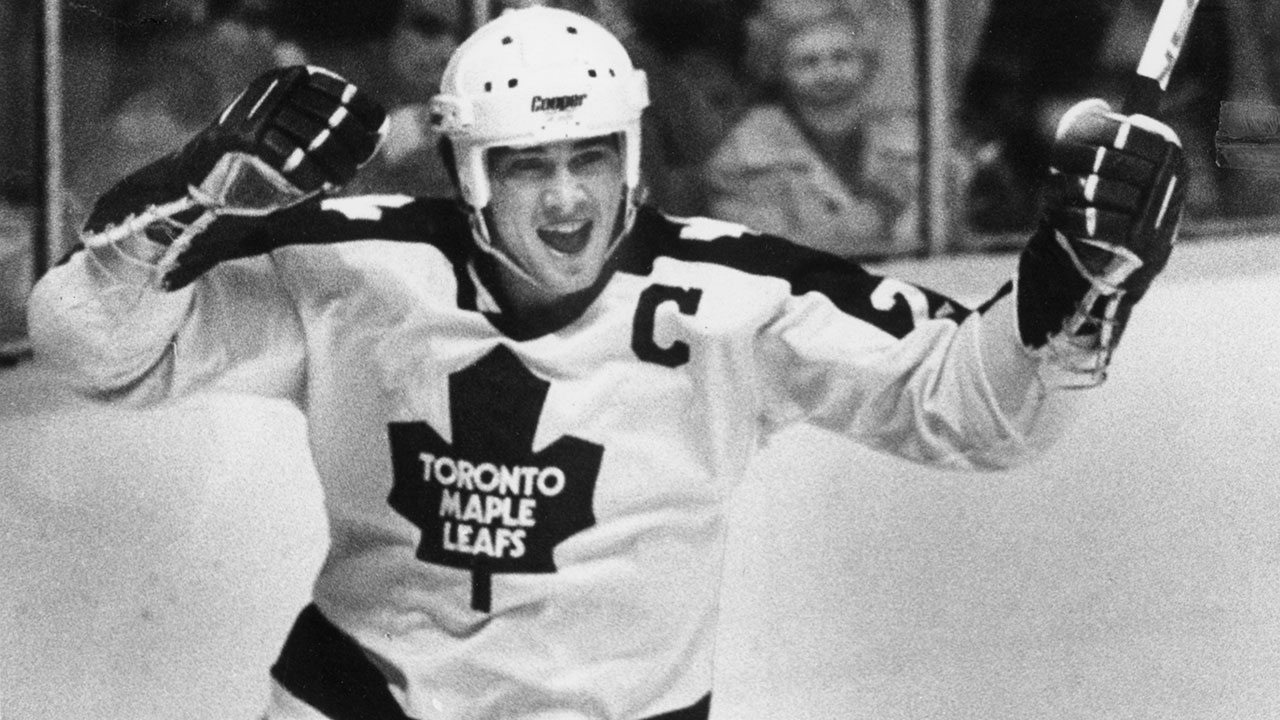
Toronto Maple Leafs captain Rick Vaive’s reaction to scoring his historic 50th goal of the season. (Julien LeBourdais/CP)
2. Rick Vaive
Canucks tenure: 1979-80
Traded to the Toronto Maple Leafs along with Bill Derlago for Dave (Tiger) Williams and Jerry Butler, Feb. 18, 1980.
A fifth-overall draft pick in 1979, Rick Vaive played only 47 games for the Canucks as a 20-year-old rookie – amassing 13 goals and 21 points and 111 penalty minutes – before GM Jake Milford deemed him expendable in the blockbuster trade for Tiger Williams.
Williams was a good player in Vancouver, scoring 35 goals in 1980-81 and helping the Canucks make the Stanley Cup Final the following season. But he spent only four-plus seasons on the West Coast.
Vaive, a power forward who could score and had a mean streak (think Cam Neely Lite), became a star in Toronto. He scored 299 goals in 534 games over seven-and-a-half seasons and in 1981-82, after the Leafs named him captain, the winger became the first player in the storied franchise’s history to score 50 goals. It was the first of three straight 50-goal seasons for Vaive. For context, consider the Canucks did not have a 50-goal scorer until Bure exploded for 60 in 1992-93.
As if Vaive’s production didn’t make the Canucks look bad enough, Derlago, Vancouver’s fourth-overall draft selection in 1978, produced 334 points in 378 games over five-plus seasons for the Leafs. In exchange for Williams, who was a good role player and secondary scorer, the Canucks surrendered two-thirds of a first line.

Boston Bruins winger Cam Neely skates against the Vancouver Canucks. (Ward Perrin/CP)
1.Cam Neely
Canucks tenure: 1983-86
Traded to the Boston Bruins with a first-round draft pick (Glen Wesley) for Barry Pederson on June 6, 1986.
When a franchise has been in the NHL for 50 years and still hasn’t won a Stanley Cup, fatalistic fans tend to cling to epic examples of the organization’s futility. In this way, even Millennials and Generation Z’ers can tell you how badly the Canucks screwed up by trading Cam Neely, the same way earlier generations can tell you how unlucky they were when a roulette wheel gave them Dale Tallon instead of Gilbert Perreault.
In 1986, general manager Jack Gordon was determined to acquire a first-line centre and agreed to give the Bruins Neely and his first-round pick in exchange for Pederson, who had produced 315 points over three seasons in Boston before shoulder surgery to remove a benign tumour in 1984 weakened the joint.
The Canucks hoped they were getting the 100-point Pederson in the trade, but the playmaking centre’s points over three full seasons in Vancouver were: 76, 71, 41. It wouldn’t have been a disaster had Neely, a hometown boy from Maple Ridge, B.C. who was drafted ninth overall by the Canucks in 1983, not developed in Boston into one of the great power forwards of his era.
In 10 seasons for the Bruins, before injuries ended his career, Neely scored 50 goals three times and became a leader iconic enough that voters put him in the Hall of Fame after he finished with 395 goals in 726 NHL games.
Making the trade even worse for the Canucks – much worse – the draft pick they gave Boston became a third-overall pick when Vancouver had a 66-point season in 1986-87, which allowed the Bruins to select two-way defenceman Glen Wesley, who logged only 1,457 NHL games and played in the NHL until he was 39.
No wonder the Canucks posted 10 straight losing seasons in the 1980s.



